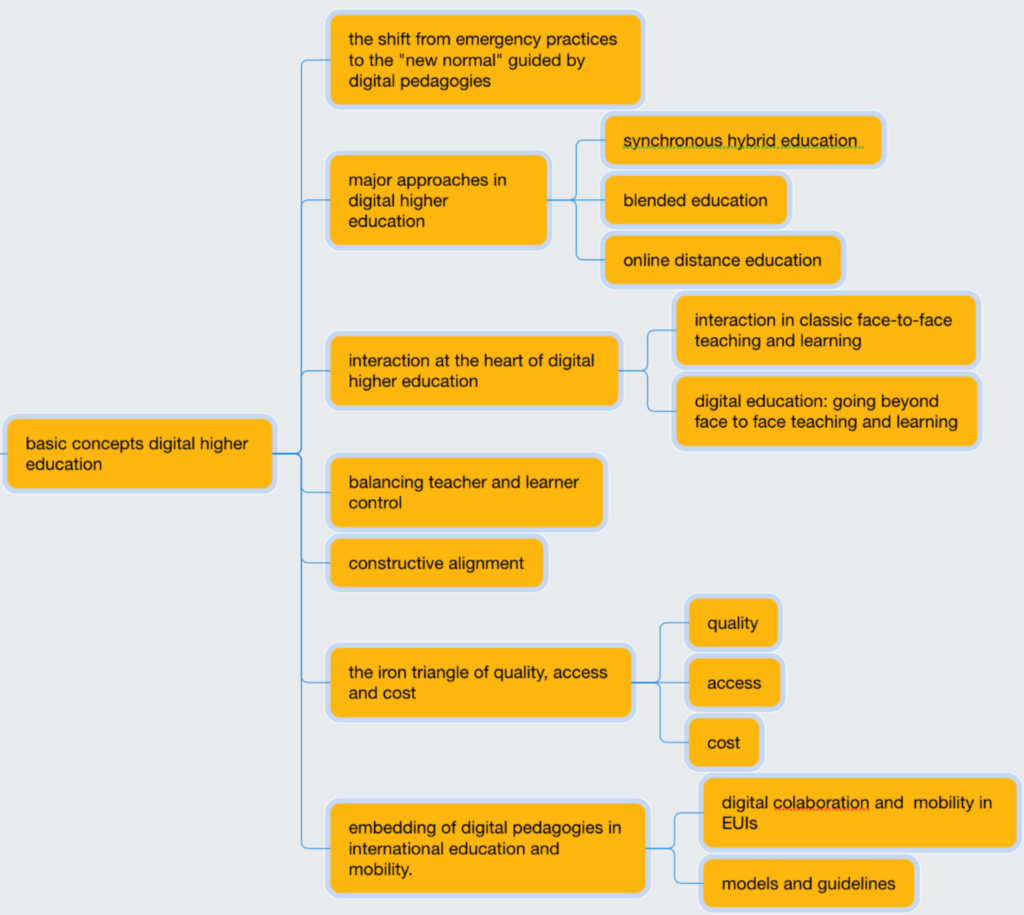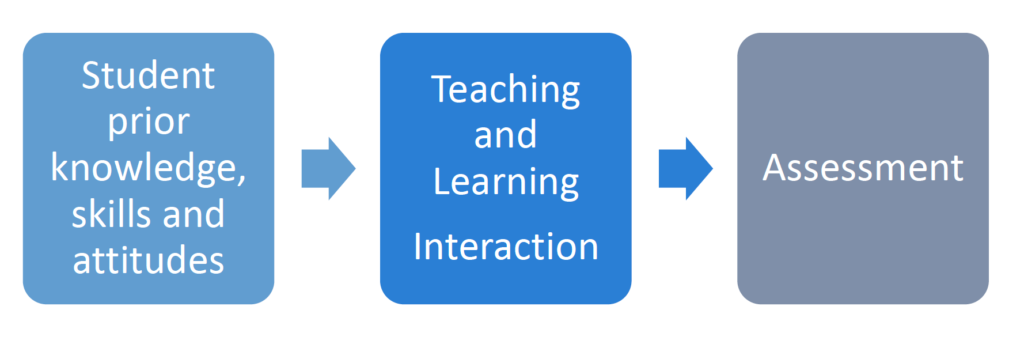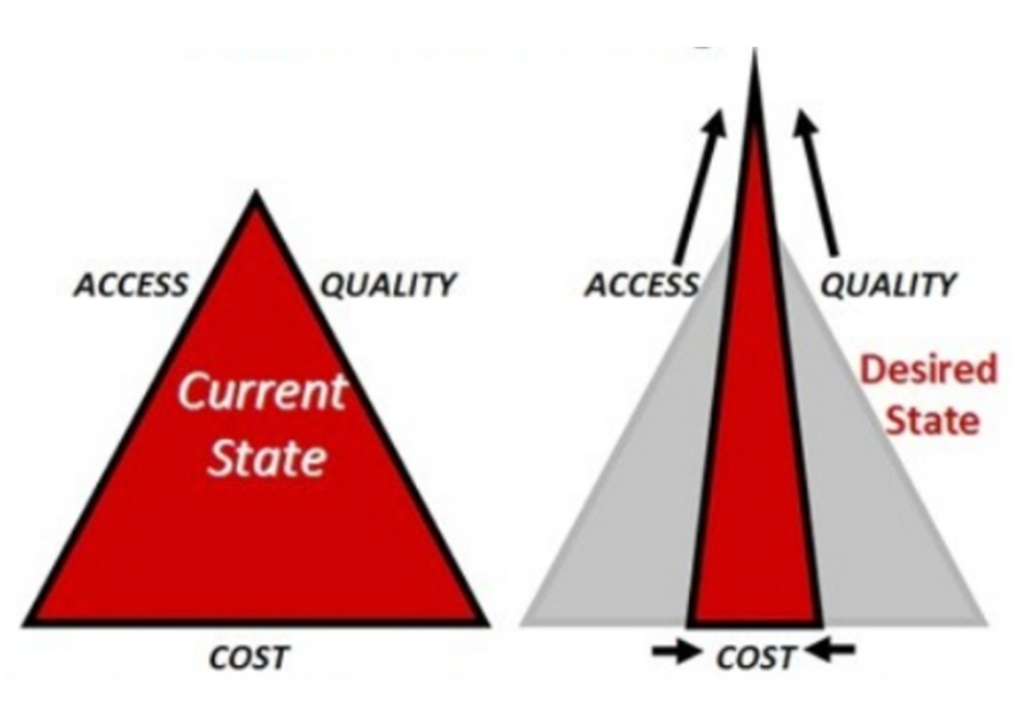
Main features of digital higher education are identified:
- the shift from emergency practices to the “new normal” guided by digital pedagogies;
- the main approaches in digital higher education: synchronous hybrid, blended and online distance
teaching and learning; - interaction at the heart of digital higher education;
- balancing between teacher and student control;
- constructive alignment between objectives and learner characteristics, teaching and learning
activities and assessment; - the iron triangle of quality, access and cost;
- the embedding of digital pedagogies in international education and mobility.
The shift from emergency practices to the “new normal” guided by digital pedagogies
The COVID-19 crisis has caused universities to switch to digital education in emergency mode and redesign their campuses. European Commission surveys from May 2020 found that during the first
lockdown period, 95.1% of universities organized online and distance learning and 82.7% organized
online exams. Emergency decisions were taken at all levels.
Subsequent waves in 2021 to 2022 caused the same challenges. Many universities allowed only half or
a fifth of students to attend classes in person, while others attended online. At other times, they had to
switch completely to online distance learning with minimal or no physical presence.
Universities, teachers and students experienced this as a disruption. Universities had to set up a
completely different educational organization and a new digital infrastructure had to be created. Many
teachers had to take the first steps in setting up digital education. After a while, students started
protesting for the right to ‘quality education’. Taking a lesson via zoom was no longer seen as a
solution. However, most remarkable was the resilience and dynamism with which teachers and
students coped with the crisis.
The COVID disruption accelerated the evolution towards digital education that was bound to come
anyway: with large student numbers and less budget per student, the quality of the learning experience
and the efficiency of higher education were already at stake in many places. These problems could not
be solved with traditional teaching and learning methods alone.
Universities, educators and students realize that emergency practices cannot continue as they were, but
that new ways of teaching and learning must be further developed and consolidated to respond to the
challenges of the university of the future: better quality, scalability and affordability (Brouns et al.,
2022; Daniel, 2016a, 2021; Laurillard, 2015; Zawacki-Richter, 2021).
However, while there was awareness of the need to accelerate the development of digital higher
education, there was also resistance and skepticism about the ability of digital education to fulfill a
university’s fundamental educational mission. Above all, many wondered whether digital education
can equal the lively interaction between teacher and students in a lecture room. What has been
experienced in this crisis is that digital education can add power to this interaction as well as to the
interaction with peer students in large as well as in small groups.
Major approaches in digital higher education
Three consistent teaching and learning design approaches seem to be able to support and enhance
these emerging practices and bring them to a higher level of level:
- synchronous hybrid education: based on settings that have in common that both on-site or ‘here’
students and remote or ‘there’ students are simultaneously included (synchronous hybrid learning (Pieters et al., 2021; Raes et al., 2019, 2022a). Examples are (multi-campus) virtual classrooms and hybrid classes during COVID; - blended education: based on a course design with a deliberate combination of online and offline
learning activities (Graham, 2013; Boelens et al., 2015; Goeman et al.,2019; Wahls et al., 2022). A
typical format is the flipped classroom. - online and distance education: based on a course design with a continuous physical separation
between teacher and learner, synchronously and asynchronously (Sangra,et al., 2022a,2022b; Martin,
2017, 2020;Mathes, 2018). Examples are MOOCs and courses in open and distance universities.
Distance learning universities organize online education, but many of them contain around 10% of
face-to-face contacts, often on a voluntary basis.
Each of these approaches require specific institutional strategies and conditions, staff training and
support. Students need digital skills and readiness for digital education, and student support and
interaction is to be incorporated in the design of each course.
In this e Book these approaches are represented in the next sections.
In many current examples of ‘digital’ course design, video lectures are often captured and stored in the
learning environment. While some benefits of the digitization of lectures (students can view/review
the lecture or part of the lecture) can be seen, no further added value is created by not exploiting the
innovative potential of digital education. Lectures and traditional formats are copied to a digital
format. So, nothing is added. It is not a new approach to teaching and learning. Also, the variable costs
of high-quality digital education do not yield economies of scale if the same pedagogies are followed
(Laurillard, 2015).
Interaction as the core of teaching and learning
The interaction between teacher and student is central to higher education, so that the student will acquire complex competences. The students start with previous competences and through interaction
with the teacher they integrate new knowledge, skills and attitudes through complex learning to become experts in a field. Complex learning occurs when professional competencies or complex skills are taught, in most cases more than a single lesson or course. Complex learning departs from a holistic view aimed at integrating multiple objectives rather than an atomistic one, where learning would be organized into a series of discrete learning objectives (van Merriënboer & Kirschner,2018).

Since Socrates, education has been seen as an interaction that gives the student insight. There is no education without interaction. This applies to both face-to-face and digital education. Laurillard explains that we cannot expect students to construct knowledge simply by self-study or discussion with their peers. The teacher’s role is to “help them acquire and validate knowledge about a subject within a dialectical environment, in which argumentation and discussion are encouraged and developed by the teacher. Conversation and discussion are key to achieving this”. (Laurillard, 2015; Daniel, 2016).
The conversational theory of learning has built on this view and has been applied from its origins to
both face-to-face and learning in a “learning box” (Pask, G., 1976a) or in an online digital environment (Laurillard, 2002; Sharpless and Ferguson, 2019; Futurelearn, 2022a, 2022b). Some design models presented in this eBook are based on this theory, which therefore has a huge influence on educational practice.
Interaction in classic face-to-face/classroom education/ lectures
In classic face-to-face lectures, teacher interaction supports student learning by motivating students and making course content relevant to them, guiding and engaging them with the objectives of the course, explaining and structuring the content, stimulating deep level thinking, addressing learning gaps, activating students through learning assignments and feedback, discussing topics and asking questions, and other aspects of teaching behavior (De Neve, 1988; 1991). During lectures, this can be supported by technological tools in the classroom, e.g. audio polls such as mentimeters.
Digital learning: going beyond classic face to face
In digital education, interaction and student support is integrated in the design of the course and part of the pedagogical models used. During the course design, teaching and learning support services support
the design of this interaction in different modes (Van Laer, 2018), taking into account:
Learner-content interaction. Is learner-content interaction facilitated?
Learner-instructor interaction. Is learner-instructor interaction facilitated?
Learner-learner interaction. Is learner-learner interaction facilitated?
Learner-interface interaction. Is learner-interface interaction facilitated?
Vicarious interaction. Is vicarious interaction facilitated?
Vicarious interaction occurs when a student actively observes both sides of a direct interaction between two other students or between another student and the instructor.
For each of these interactions, it is required that they are an element of teaching and learning design
and that an appropriate learning environment and tools are available.
Teaching staff and students have to be made familiar with online pedagogies and the technology behind it.
Balancing learner and teacher control
In the interaction between teaching staff and learner, a balance that has to be found between selfregulation and instructional planning (Vrieling, Stijnen & Bastiaens, 2018), or between teacher and
learner control. This balance is depending from multiple factors, for example related to the learner’s
prior knowledge and ability to undertake a task, the degree of difficulty of a learning task, or the
structure of a course.
The balance between learner and teacher control is to be taken into account during the design of a
course (Van Laer, 2018):
- Control over pacing. Is control of pacing allowed?
- Control over content. Is control of content allowed?
- Control over learning activities. Is control of learning activities allowed?
- Control over content sequence. Is of control of content sequence allowed?
Constructive alignment
Learning activities should be aligned to the learning objectives and student characteristics. They lead to learning outcomes to be assessed (both formative and summative). Teaching staff as well as educational designers and support services should be aware of this. All design steps take this into account.
The iron triangle of quality, access and cost
By leveraging new ways of teaching and learning, teaching staff are expanding their teaching capacity with online teaching and learning tools and a complete online learning environment. Students undertake both online and offline learning activities and have access to knowledge resources worldwide.

The added value of digital education that this entails can be related to the iron triangle with three vectors: quality, access and cost. According to Daniel, classroom teaching “ does not allow us to extend any one of these three vectors in the desired direction without compromising the other two. Only through the use of technology, which has already increased the availability and costeffectiveness of products and services in most other aspects of life, can quality education be expanded at low cost. Technology renders the iron triangle flexible so that it can be stretched to give greater access and better quality while simultaneously lowering costs” (Daniel, 2016).
Therefore, the promise of digital education is that it contributes to increasing quality and access and
lowering cost. Digitally enhanced modes of teaching and learning have an effect on the three vectors
of the iron triangle (see also: Haywood et al., 2015):
Quality
- enabling staff to design innovative teaching and learning formats with the students and their talents and aspirations at the center, in close interaction with research and innovation, through formats such as collaborative learning communities, problem-based learning groups, project groups, case studies, virtual seminars, think tanks and many other formats:
- integrating multiple forms of interaction (see above), making education intensive;
- improve quality through a wide range of learning activities: acquisition, inquiry, discussion, practice, collaboration, production learning (Laurillard, 2015) and thereby contributing to deep level learning;
- creating flexibility, taking higher education to students when and where they need it by adopting asynchronous course components. It can bring education to the working floor as well as to the student’s home;
- Leading to high student and staff satisfaction, when incorporated into innovative curricula and
strategies for systemic institutional innovation.
Access
- providing flexible access to (very) large groups of learners, taking advantage of the ubiquitous presence of digital technology, regardless of place, time and pace, and the increased digital skills of both students and teachers.
- Organizing (very) small-scale groups, by dividing large number of students in peer groups/learning communities, interacting as a group with staff, up leveling learning through “we-learning”;
- Providing open and flexible education for part-time or off campus students, who combine study with work or care, requiring specific course design and delivery;
- Providing inclusive education, taking into account specific characteristics of students, including students with special needs;
- Organizing borderless or multi-campus/multi-site learning: the classroom becomes a virtual (international) classroom or expands to the work place;
- Bringing a new dimension to internationalization through blended and online courses; and virtual mobility for all, involving two or more campuses, also respecting conflicting schedules and time zones by asynchronous education;
- Organizing collaborative doctoral spaces, giving students reciprocal access to research and innovation departments and infrastructure.
Cost
- New ways of teaching and learning are cost-effective when working with large numbers, due to lower variable costs, especially when teachers work together or can build on each other’s designs;
- Courses can be developed by course teams and repeated over several years. Because the staff time for delivering a course is under control, the variable costs per student will decrease; Educational resources can be shared between teaching staff and institutions (OERs);
- In digital education, individual teaching staff devote more time to design and development and
less to active teaching; - Instructional designers in educational services support staff which creates conditions for smooth course and programme design.
Embedding of digital pedagogies in international education and mobility
Digital higher education supports course and programme collaboration and mobility in university networks and European Universities.
Since 2021, 340 universities have been involved in 44 European Universities Initiatives or EUIs (European Commission, 2018) with around 340 higher education institutions in both capital cities and remote regions of 31 countries. The European Commission considers these alliances as a priority and a
spearhead for innovation to be supported by digital education.
The EUIs organize an integrated European campus, e.g., through joint courses and programmes and
embedded mobility for students and staff. In line with the delivery mode of programmes, mobility can
be physical, virtual, or blended. The target is 50% short-term or long-term mobility, depending on the
curriculum goals and personal preferences of the students.
The COVID crisis was an emergency test for the alliances for organizing this as planned. Digital teaching and learning methods enabled them to realize the goals they are committed to. To this end, they brought together the best expertise in the field of digital education at their partner institutions. Now, they see the need for changing emergency approaches in sustainable pedagogies for international education.
By partnering with around 1.300 associated partners ranging from non-governmental organisations (NGOs), enterprises, cities, local and regional authorities, the European Universities are able to substantially increase the quality and scope of higher education in Europe. This is particularly the case
with continuing education and professional development and open education. Digital microcredentials
and MOOCs can play a primary role in this (see section 4).
next chapter: Synchronous hybrid education
previous chapter: Teaching and learning in digital higher education: an overview
back to overview: Models and guidelines for the design and development of
digital teaching and learning in higher education
